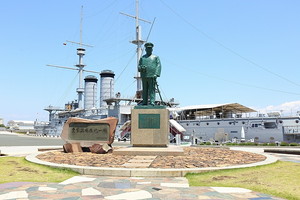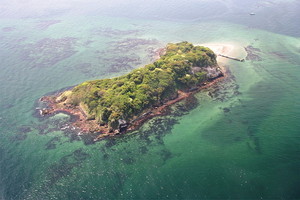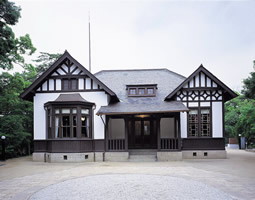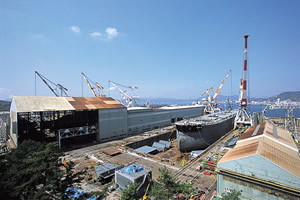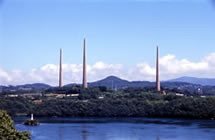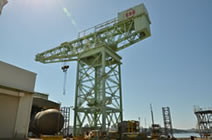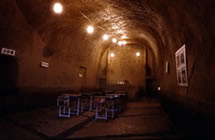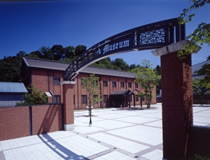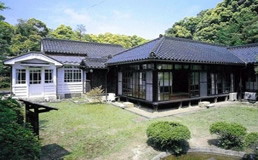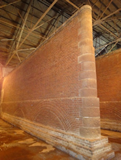Modernization Period Monuments of Four Cities
In Yokosuka City, Kure City, Sasebo City, and Maizuru City, we can discover buildings that symbolize the modernization of Japan and were built from the Meiji era (1868-1912) to the beginning of the Showa era (around 1926) (late Edo Period, around 1865, in the case of Yokosuka City), along with many rare artifacts that let people learn about the history of modern Japan.
The four cities are working hand in hand to push forward with efforts toward preserving these buildings and rare memorabilia as monuments to the modernization period and passing on their historical significance to future generations.
Some of those efforts are introduced in this website.
Yokosuka City
| Name and other information | Description | Restricted visiting | Remarks |
|---|---|---|---|
| United States Fleet Activities Yokosuka Dry docks |
There are six dry docks and dock No. 1 is the oldest stone dry dock in Japan. | Not open to public | Site tours are available several times a year. (Advance booking required.) |
| Japan Maritime Self-Defense Force (JMSDF) Tadodai Residence |
Old Residence of the Commander in Chief of Yokosuka Naval | Not open to public | Open to public once a year (April) |
| Memorial Ship “Mikasa”---One of world top-three historical battleships | Flagship of combined fleet during Russo-Japanese War (of 1904 – 1905) | Open to public | Open every day except between December 28 to 31. |
| Sarushima Battery | Gun battery of Meiji era built on a natural island in Tokyo Bay. | Open to public | Depends on Sarushima service sailing route (Operates between December and February and available on Saturdays, Sundays, and national holidays only.) |
| Chiyogasaki Battery | Gun battery of Meiji era built at the entrance of Uraga Channel. | Not open to public | Plans for providing tours several times a year (details not fixed yet.) |
|
|
Kure City
| Name and other information | Description | Restricted visiting | Remarks |
|---|---|---|---|
| MaritimeSelf DefenseForce Kure District Inspector General Department Building | Old Kure district ('chinjufu') government buildings of brick masonry completed in 1907 (Meiji 40). | Open to public | Open to public every Sunday (Advance booking required.) |
| Irihuneyama Memorial Museum | This museum includes the old Kure Naval District Commander-in-Chief official residence, which is a national important cultural property. | Open to public | Closed: Every Tuesday |
| Yamato Museum collection | Design drawings of the battleship "Yamato." A 1/10th scale model of the battleship "Yamato" is exhibited, etc. | Open to public | Closed: Every Tuesday |
| Storage shed of the former Kure Navy Yard shipbuilding dock | You can view the storage shed of the dock from "Rekishi no Mieru Oka (Hill with a view of history)." | Today, the dock has been reclaimed by a landfill. | |
| Honjo watershed dam | This still operational dam was a water supply facility of the old Kure district ('chinjufu') government and is a national important cultural property. | Not open to public | Open to public once a year (from end of March to beginning of April) |
|
|
Sasebo City
| Name and other information | Description | Restricted visiting | Remarks |
|---|---|---|---|
| Former Sasebo Radio Facility (Hario Transmitting Station and Radio Tower) | This 136m-high radio tower is a national important cultural property constructed in 1922. | Open to public | Closed: Year-end and New Year holidays and during the Bon festival Guide provided by local preservation society |
| Sasebo Citizen Cultural Hall (Former Sasebo Naval District Triumph Memorial Hall) |
Registered tangible cultural property. This building was constructed in 1923. Today, it is used as a hub for civic culture activities. | Plans for opening to public | The building is under repairs at present in order to open it to the public and put it to use. |
| Sasebo Heavy Industries (SSK) 250-ton crane (The 250-ton crane was installed for the shipbuilding unit of Former Sasebo Naval Arsenal) |
Registered tangible cultural property. This crane was installed in 1913 and is operating even today. | Not open to public | Viewing from a distance only. Landmark of Sasebo |
| Maritime Self-Defense Force Sasebo Museum (Sail Tower) | This museum shows the history of Sasebo from the perspective of "defense of the west sea." | Open to public | Closed: Third Thursday of every month, Year-end and New Year holidays |
| Mukyu-do(underground classroom of the former Miyamura public school) | Not Yet Designated as Cultural Property. This air-raid shelter was built in 1935. The underground was drilled by elementary school students during the Second World War. | Open to public | Closed: Year-end and New Year holidays Guide provided by local preservation society |
|
|
|
Maizuru City
| Name and other information | Description | Restricted visiting | Remarks |
|---|---|---|---|
| World Brick Museum | Former Maizuru Naval Arsenal Fish-type Torpedo Warehouse | Open to public | Closed: Year-end and New Year holidays |
| Repatriation Memorial Park | This is the only museum in Japan that exhibits a series of historical evidence and documents related to repatriation from China and other places. | Open to public | Closed: Third Thursday of every month |
| Naval Museum | Large auditorium of the former Naval Engineering College | Open to public | Every Saturday, national holidays |
| Conference Room of Japan Maritime Self-Defense Force (JMSDF) Maizuru District Headquarters (Heihachiro Togo’s residence) | Former Maizuru Naval District Admiral's residence | Open to public | First Sunday of every month |
| Former Kitasui water purification plant | Water supply installations of former Maizuru 'Chinjufu' (naval station) (one facility) | Not open to public | Site tour available several times a year (Advance booking required.) |
|
|
|




